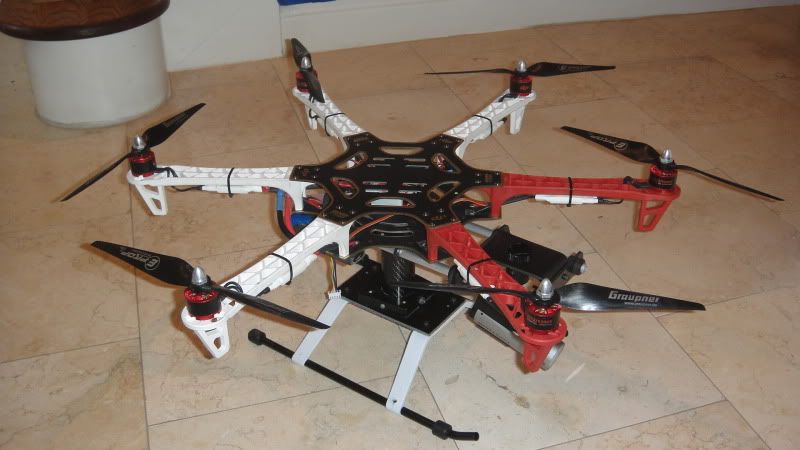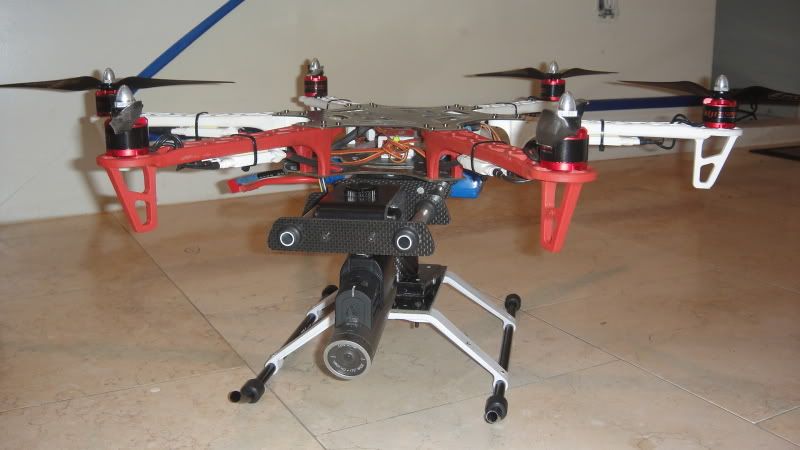Hi everyone my name is Neill and I am new to these forums. This is my first post actually! I am a long time RC'er, long time heli guy, and mechanical engineer by trade. I recently purchased a DJI F550 for the specific purpose of aerial video for use with a small company I own with a couple buddys. Its a videography and production company. Who would have guessed?!
www.gearheadflicks.com
I understand there are many more "pro" systems out there than the DJI F550 but it fits the budget of our flegling company right now...
Currently I modded my F550 with some landing gear and a self fabricated antivibration "hard" camera mount. As seen in the pics below. Soon I plan to upgrade the bird with the Naza add-on GPS and a nice camera gimbal. I plan on using the Sony NEX-5N as our camera. I have done a fair amount of research in gimbals and recently came across this one: http://tppacks.com/catalog/product_info.php?products_id=33&osCsid=30bb2fa6ebd540f3804ed5573bc05e19
This one is designed specifically for the F550 and the guy who designed and built it looks to have really done his research in regards to servo selection, ratios, and overall design. He also suggests to use the XA V2 FC/AHRS for gimbal control instead of the onboard Naza gimbal control due to limitations he has uncovered. If you follow his thread over at RC groups and actually look into the specifics of why his system gets the results his demo video seems to show it looks as though this is a good choice for a gimbal. But, as with anything you never know till you try. I would like an unbiased opinion of someone who has actually tried this system out themselves...
Has anyone?




www.gearheadflicks.com
I understand there are many more "pro" systems out there than the DJI F550 but it fits the budget of our flegling company right now...
Currently I modded my F550 with some landing gear and a self fabricated antivibration "hard" camera mount. As seen in the pics below. Soon I plan to upgrade the bird with the Naza add-on GPS and a nice camera gimbal. I plan on using the Sony NEX-5N as our camera. I have done a fair amount of research in gimbals and recently came across this one: http://tppacks.com/catalog/product_info.php?products_id=33&osCsid=30bb2fa6ebd540f3804ed5573bc05e19
This one is designed specifically for the F550 and the guy who designed and built it looks to have really done his research in regards to servo selection, ratios, and overall design. He also suggests to use the XA V2 FC/AHRS for gimbal control instead of the onboard Naza gimbal control due to limitations he has uncovered. If you follow his thread over at RC groups and actually look into the specifics of why his system gets the results his demo video seems to show it looks as though this is a good choice for a gimbal. But, as with anything you never know till you try. I would like an unbiased opinion of someone who has actually tried this system out themselves...
Has anyone?




